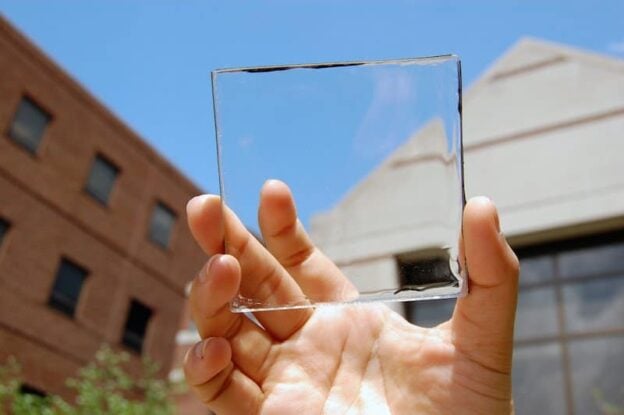Inspenet, July 27, 2023.
Materials science experts are exploring how to integrate transparent solar panels into different environments.
A major breakthrough has recently been made in Japan, where a team of researchers led by Toshiaki Kato of Tohoku University has developed an innovative design that could create invisible solar panels .
The design devised by Kato is based on the use of indium tin oxide (ITO) , a conductive material that is transparent. To create their solar cell, Kato’s research team exposed an ITO electrode to a tungsten disulfide (WS2) vapor. Under certain conditions, the steam deposited a thin layer of WS2 only one atom thick on the surface of the ITO, making it a semiconductor.
To achieve this, Kato’s team covered the ITO with a carefully selected thin metal and placed an insulating layer between the ITO and the WS2. In this way, the researchers were able to precisely control the “contact barrier” between the two materials, which determines the energy that electrons must acquire to pass from one material to the other.
In this situation, the electrons in the WS2 layer pass through the contact barrier by absorbing incoming photons and jump between the two “energy bands” of the semiconductor, transforming the material from an insulating to a conducting state.
How efficient would invisible solar panels be?
Faced with such a discovery, Kato’s team was able to significantly increase the height of the contact barrier in their manufacturing process compared to previous designs. This resulted in a drastic increase in the voltage between the electrons in the ITO and the “holes” they left in the semiconductor.
Thanks to these improvements, his device is 1,000 times more efficient at converting incoming light into electrical energy than currently available ITO-based solar cells. At the same time, the team’s choice of materials was much more transparent than previous designs , allowing approximately 79% of incident light to pass directly through the device .
The team also investigated how to produce their solar cell on a larger scale without sacrificing efficiency. Unlike previous ITO-based solar cells, where increased material surface area resulted in decreased voltage, the researchers demonstrated that high performance could be maintained in solar cells down to 1 cm 2 .
Transparent and more efficient panels provide extensive possibilities
This significant advance in transparency and efficiency could be a crucial step in efforts to integrate solar panels almost invisibly into various existing technologies.
If this material becomes commercially accessible in the future, Kato’s team believes it would allow a wide variety of electronic devices to capture abundant solar energy without relying on a grid or external power source.
We are facing a future where windows could be transformed into efficient energy collectors, electronic devices could be powered autonomously and transparent solar panels could blend perfectly with our daily surroundings, going unnoticed by the naked eye. The sun has always been around, but now we are closer than ever to harnessing its energy in innovative and revolutionary ways.
Source and photo: https://ecoinventos.com/los-paneles-solares-transparentes-podrian-transformar-tus-ventanas-en-generadores-de-energia/amp/

